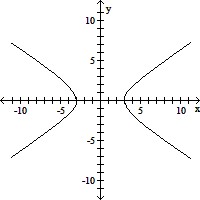Find all points where the function is discontinuous.
A. None
B. x = -2
C. x = 6
D. x = -2, x = 6
Answer: C
You might also like to view...
Provide an appropriate response.Brian invested $4000 at an interest rate of 5% for 10 years, where the interest was compounded semiannually. If A = P
 calculate the accumulated amount.
calculate the accumulated amount.
A. $6,554.47 B. $3,277.24 C. $26,217.88 D. $13,108.94
Solve the problem. Assume that simple interest is being calculated in each case. Round your answer to the nearest cent.Allan borrowed $4900 from his father to buy a car. He repaid him after 5 months with interest of 10% per year. Find the total amount he repaid.
A. $5063.33 B. $5390.00 C. $204.17 D. $5104.17
Solve the problem.Economists use what is called a Leffer curve to predict the government revenue for tax rates from 0% to 100%. Economists agree that the end points of the curve generate 0 revenue, but disagree on the tax rate that produces the maximum revenue. Suppose an economist produces this rational function  where R is revenue in millions at a tax rate of x percent. Use a graphing calculator to graph the function. What tax rate produces the maximum revenue? What is the maximum revenue?
where R is revenue in millions at a tax rate of x percent. Use a graphing calculator to graph the function. What tax rate produces the maximum revenue? What is the maximum revenue?
A. 37.5%; $210 million B. 39.6%; $209 million C. 35.8%; $209 million D. 34.9%; $207 million
Determine whether the graph is that of a function. If it is, use the graph to find its domain and range, the intercepts, if any, and any symmetry with respect to the x-axis, the y-axis, or the origin.
A. function domain: {x|-3 ? x ? 3} range: all real numbers intercepts: (-3, 0), (3, 0) symmetry: x-axis, y-axis B. function domain: all real numbers range: {y|y ? -3 or y ? 3} intercepts: (-3, 0), (3, 0) symmetry: y-axis C. function domain: {x|x ? -3 or x ? 3} range: all real numbers intercepts: (-3, 0), (3, 0) symmetry: x-axis, y-axis, origin D. not a function